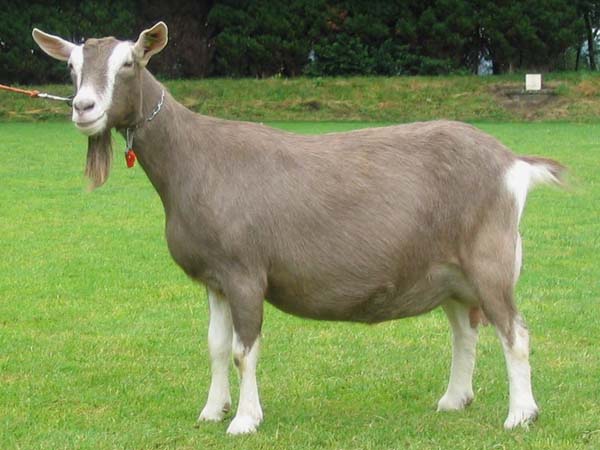Type the name of the breed you're looking for below
[wpdreams_ajaxsearchlite] Don't see the breed your're looking for? Click here and let us know!
Toggenburg goat
| Place of Origin | Switzerland |
| Origin | Toggenburg goats are a Swiss dairy goat named after the region in Switzerland where the breed originated, the Toggenburg valley in the Canton of St. Gallen. They are considered to be the oldest known dairy goat breed. |
| Purpose | Milk |
| Characteristics | Toggenburgs are medium size, sturdy, vigorous, and alert in appearance. Toggenburg goat hair is short or medium in length, soft, fine, and lying flat. Its colour is solid varying from light fawn to dark chocolate with no preference for any shade. They are also found with white ears with dark spot in middle; two white stripes down the face from above each eye to the muzzle; hind legs white from hocks to hooves; forelegs white from knees downward with a dark lien (band) below knee acceptable; a white triangle on either side of the tail; white spot may be present at root of wattles or in that area if no wattles are present. Varying degrees of cream markings instead of pure white are considered acceptable, but not desirable. They have erect ears that are carried forward. Their facial lines may be dished or straight, but never roman. |
| Other Considerations | Toggenburgs perform best in cooler conditions. They are noted for their excellent udder development and high milk production, and have an average fat test of 3.7 percent. Toggenburgs are generally a friendly, quiet, and gentle breed, and are good as pets, although they are classed as dairy goats. They are often extremely curious and inquisitive animals. Toggenburgs are arguably the hardiest of all goat breeds; crosses with meat goats (i.e. Kalahari red, Boer goats) can add better growth rates to their offspring, offering a milking line to the offspring of meat goats. In 2006, in Switzerland where the breed was officially recognized in 1892, there were 850 goats in the Toggenburg Valley and the Werdenberg region of 3000 in Switzerland, which is down from 20,000 in the 1950s. The club St. Gallen Goat Breeders Association, that was founded in 1901, registers the breed. The Verein Ziegenfreunde was formed to protect the breed and unite breed owners. The Toggenburg breed underwent a development program when introduced to Britain; the resulting British Toggenburgs are heavier and have improved milk quality. By the middle of 2002, 4146 Toggenburgs had been registered with the New Zealand Dairy Goat Breeders Association, |



